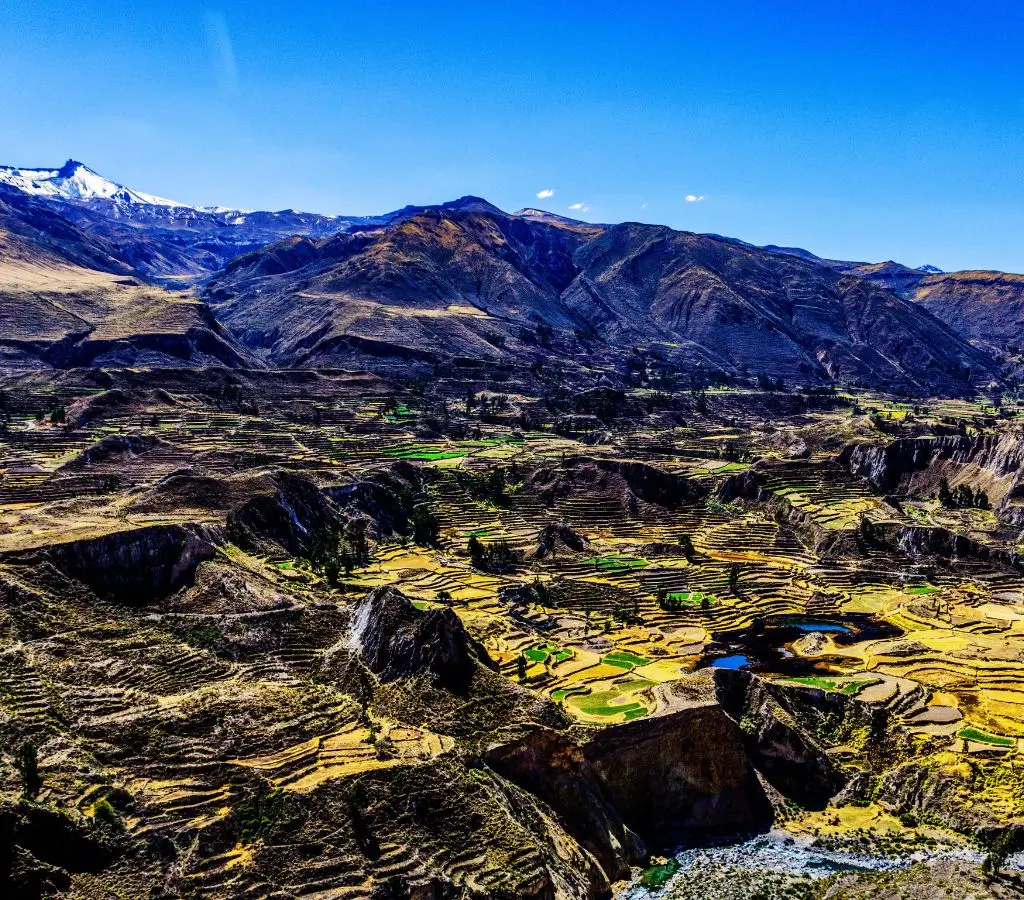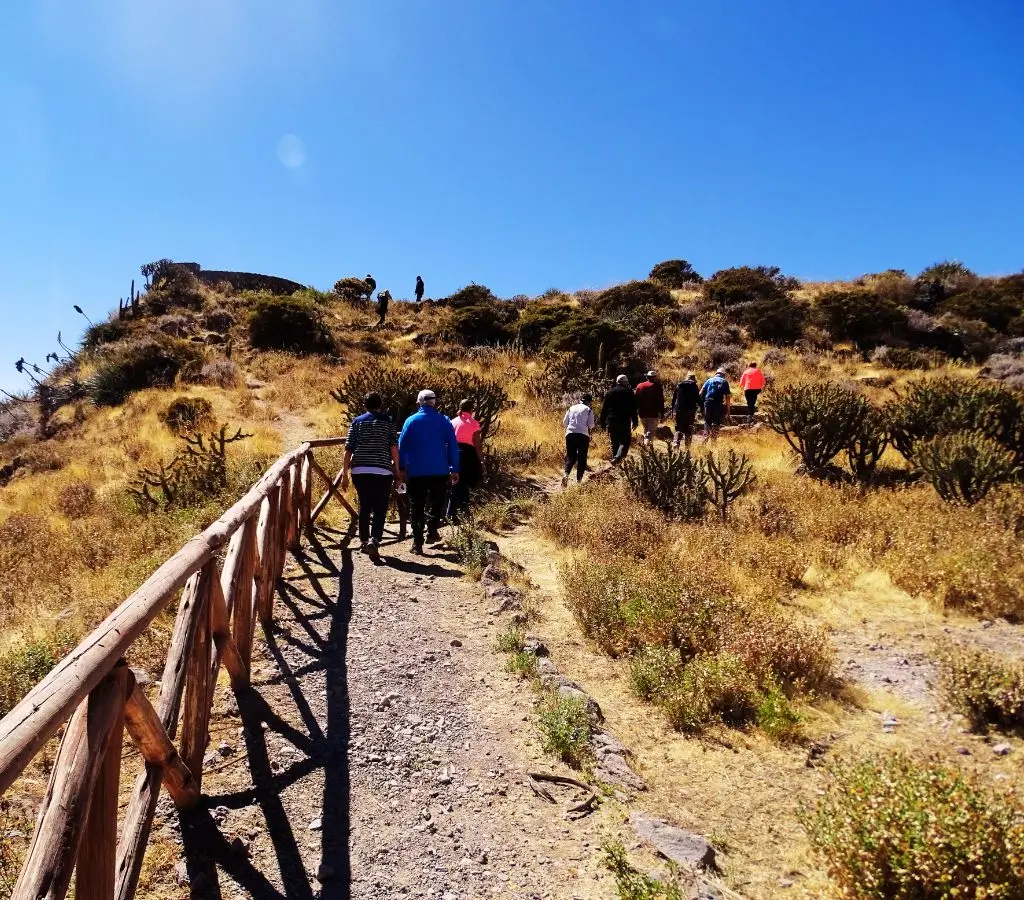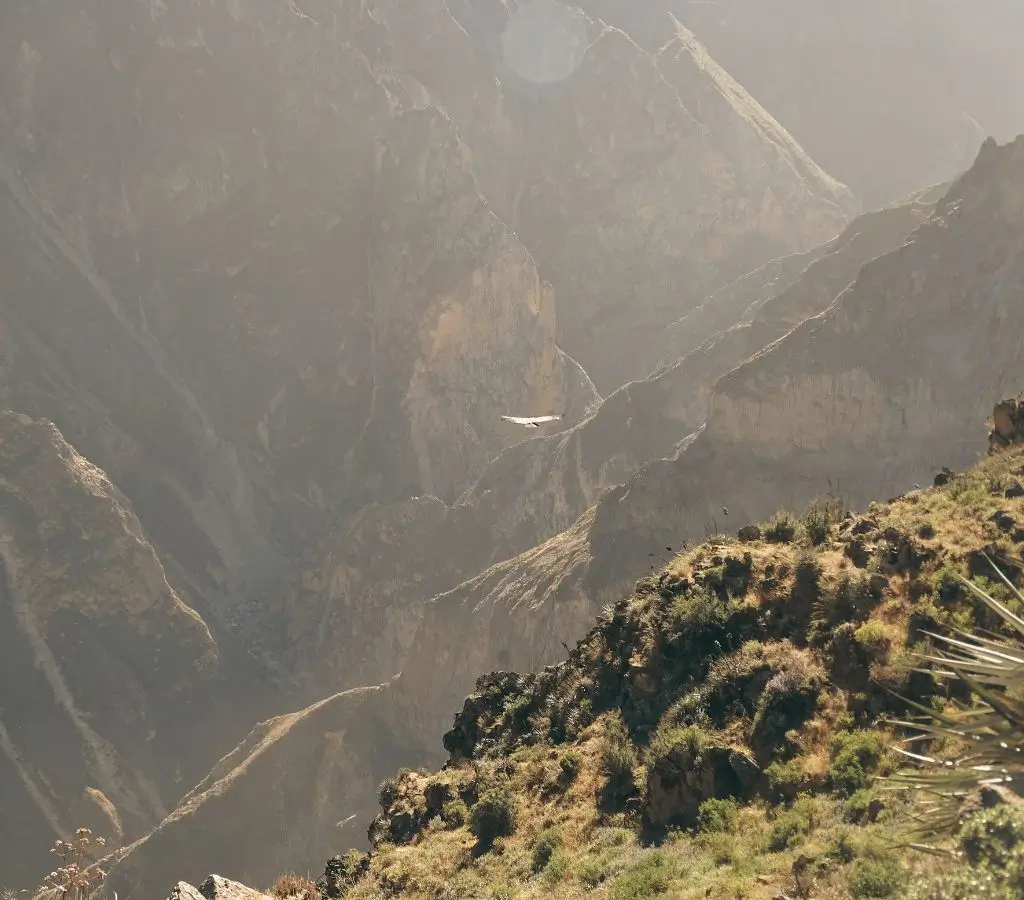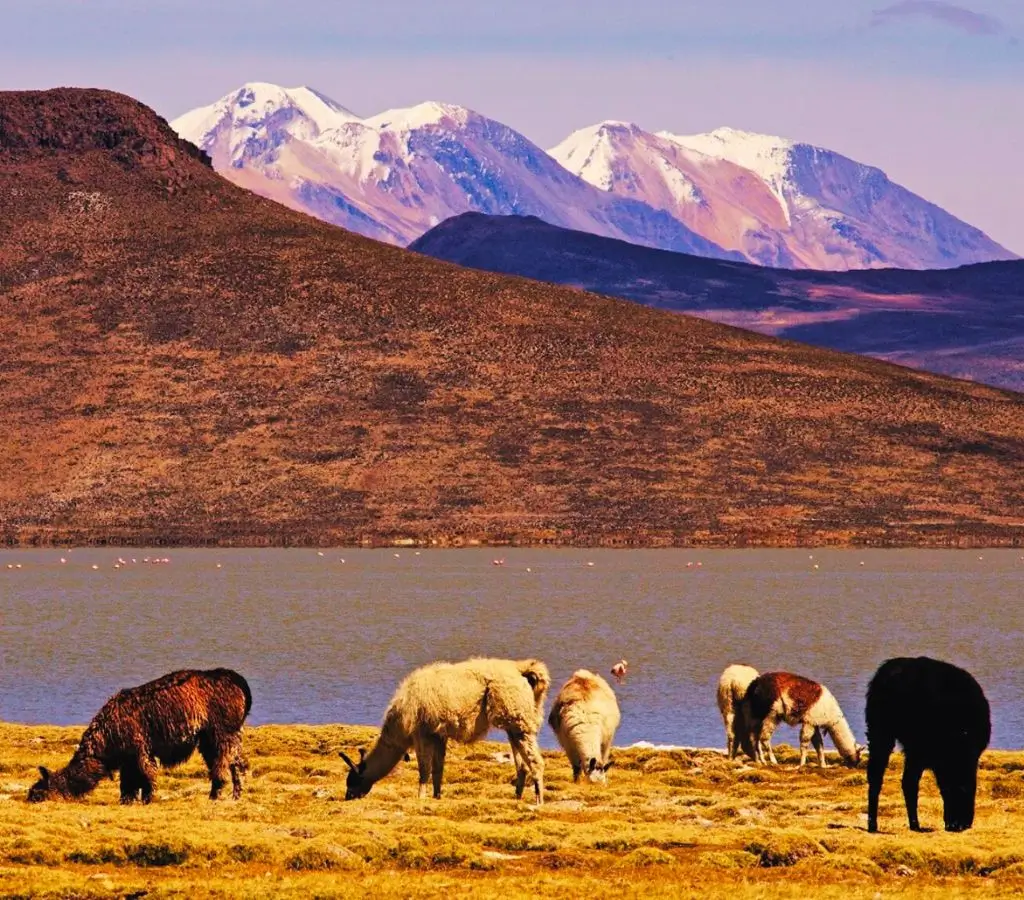The Colca Canyon is Peru's second most visited attraction after Machu Picchu and stands as one of the deepest canyons on the planet. In this paradisiacal location, you can witness the incredible flight of condors, explore the beautiful surrounding fauna, engage in activities such as hiking, cycling, and more. Explore this picturesque landscape and discover additional destinations yet to be unveiled.
Colca Canyon is an impressive canyon located in the Arequipa region, considered one of the deepest canyons globally, boasting spectacular landscapes, pre-Inca agricultural terraces, and rich biodiversity.
With a depth of 4,160 meters, it ranks as the second deepest canyon globally, formed 150 million years ago by the erosion of the Colca River along a volcanic fault. Today, it is surrounded by approximately 40 volcanoes, creating a unique and breathtaking landscape.
The Colca Canyon features a diverse array of flora and fauna that can be discovered while traversing its paths.
The flora in Colca Canyon is diverse, with a variety of plants adapted to extreme altitude and climate conditions. Giant cacti, queñua (Andean tree), and various indigenous plants such as bofedales, yaretas, cacti, and the significant Raimondi's puya can be found.
The fauna is equally varied, with the Andean condor being the most emblematic species of the canyon. Besides condors, various birds like the peregrine falcon, ajoya, and Andean fauna species like vicuñas, alpacas, llamas, tarucas, Andean fox, and parihuana can be spotted.
The altitude of Colca Canyon varies, reaching from 2,900 meters to 4,600 meters at some points, making it one of the world's deepest canyons.
It is situated in the Colca Valley, belonging to the town of Chivay in the Caylloma province.
From Arequipa, one can reach Colca Canyon by road from the city to the Chivay district. The journey offers panoramic views of the Andes, and the travel time is approximately 3 to 4 hours, depending on road conditions.
Adventure sports enthusiasts and ecotourism lovers find Colca Canyon an ideal destination for activities such as hiking, cycling, rock climbing, bathing in thermal baths, bird watching, observing native fauna, and more.

One of the main attractions is Condor's Cross, a viewpoint where you can witness the majestic flight of Andean condors. It is located at an altitude of 3,287 meters, and from here, you can observe them either in groups or flying solo. The recommended time to visit is in the mornings, so it's advisable to arrive early and enjoy the natural spectacle these birds offer.


This viewpoint offers breathtaking panoramic views of the canyon and its surroundings, making it an ideal place to appreciate the landscape.

Relax in the local hot springs, providing a unique experience amidst the natural environment. You can find these hot springs in various towns in Arequipa, such as Chivay (La Calera), Yanque (Chacapi baths), Caylloma (Coñeymayo baths), among others.
Moreover, it is known that these thermal medicinal waters contain various minerals, relieving muscular and rheumatic pains.
Embark on a hike to the town of Cabanaconde, exploring the scenic beauty of the trail and immersing yourself in the local culture. It is one of the more challenging treks, suitable for enthusiasts only. Along the way, you will encounter the surrounding fauna and flora, and most importantly, interact with the villages you come across.
Visit charming villages along the valley, where you can experience rural life (community tourism) and the hospitality of the local population. You'll share their food, culture, and traditions. Some of the villages you can visit include Yanque, Achoma, Maca, Pinchollo, Cabanaconde, Coporaque, Ichuámpa, Lari, Chivay. Each village is surrounded by snow-capped mountains, archaeological remains, and rich traditions and history.
Explore this reserve to observe local fauna such as vicuñas, lagoons, mountains, the stone forest, and other unique attractions. I recommend visiting between the months of April to October (dry season) for a better experience.



